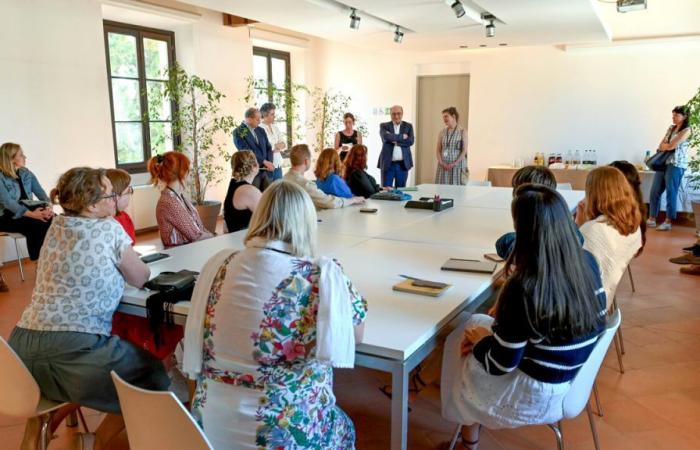
On the two days of Monday and Tuesday the great exhibition on the Pre-Raphaelites, scheduled until June 30th at the San Domenico Museum in Forlì, hosted a workshop reserved for a group of postgraduates made up of 12 doctoral students from Yale University and 6 doctoral students from University of York, coordinated by some of the curators of the exhibition, namely Liz Prettejohn, head of the Department of Art History at the University of York, Peter Trippi, former director of the Dahesh Museum of Art and Tim Barringer, Paul Mellon Professor at the Yale University Department of Art History.
In addition to visiting the exhibition, the group had the opportunity to meet some of the leading experts in the sector, such as Morna O’Neill and Andrea Wolk Rager, internationally renowned scholars of 19th century British art.
On the occasion of the seminar meeting which was held yesterday afternoon in the red room of the San Domenico Museum, the group was then joined by Gianfranco Brunelli, director of the exhibition, who highlighted to the students the scientific innovations of the exhibition. That is, first of all its periodization: not only the first and second generations of the Pre-Raphaelites (that of Rossetti and Burne-Jones, that of Millais and Leighton and Watts), but also the third which with Ricketts and Shannon reaches the years ’20s of the twentieth century. Then the comparison between the various phases of the Italian movement and art from the fourteenth to the sixteenth century.
“That comparison, the lesson of the Italian Renaissance and once again the influence of the Pre-Raphaelites on the Italian art of the late nineteenth and early twentieth centuries – Brunelli recalled – are ultimately a look at the relationship between generations which attest to how the concept of time, the relationship with our past changes our perception of the present and the future. Choosing a past as a justification model for a present means reinventing that past itself. Don’t close the story. They were not passés. Theirs was neither a conservative revolution nor a reactionary revolt. They ferried Romanticism into Symbolism, opened up to Art and Craft and Liberty. They were the first avant-garde, the first movement that would pave the way for the European twentieth century.”
At the end of yesterday’s meeting, Brunelli and the teachers then accompanied the students to see Canova’s Hebe, the symbol and most valuable work of the civic art gallery.



